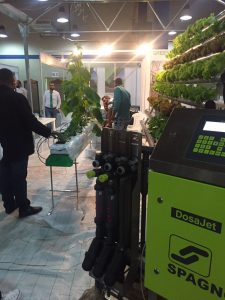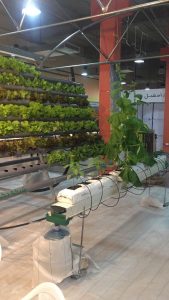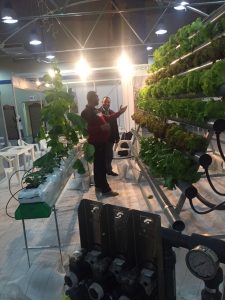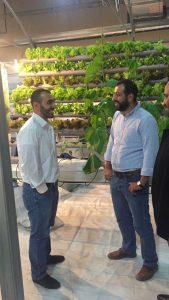معرض “تقنيات الزراعة الحديثة”
أثناء مشاركتنا في معرض “تقنيات الزراعة الحديثة” برعاية معالي وزير الزراعة الأستاذ غازي زعيتر وذلك في غرفة التجارة والصناعة والزراعة في صيدا






أثناء مشاركتنا في معرض “تقنيات الزراعة الحديثة” برعاية معالي وزير الزراعة الأستاذ غازي زعيتر وذلك في غرفة التجارة والصناعة والزراعة في صيدا






“Do not let a drop of water seep into the ocean without benefiting mankind” ~ king Parākramabāhu I of Sri Lanka
Lakes are critical water source in communities, cities, agriculture, and industry in many countries around the world.
In each irrigation area, there is a demand for water and a supply of water. The demand for water varies over time and depends on the types of crops, crop growth stages, and on the climate.
The possibility of supplying as much water to the irrigation area as is needed during each period of the irrigation season depends primarily on the availability of the water at its source, which led to the development of water source management, and the building of reservoir AKA Artificial Lakes.
Artificial lakes dating to the 5th century BC, they have been found in ancient Greece.
There are significant variations in the size of artificial lakes such as big artificial lakes or small pond-like waterbodies, they are more amenable to artificial operation and regulation than lakes. They are fed by precipitation, rainwater that falls directly on the surface of the lake, by water run-off from the adjacent land and small streams, by groundwater that seeps through the soil to the lowest point which is the lake.
Water can be taken from the lake via a polyethylene pipe or steel pipe.
Sometimes, water loss can occur due to natural elements such us evaporation this is why Daccache Company provides a wide range of colored geomembranes, such as white color to reduce the evaporation level due to the heated standard black membrane by sunlight.
Due to the dramatic climatic changes that affect the rainfall average and the groundwater levels are forcing all farmers to think how they can manage to meet their irrigated crops need of water.
The plastic lakes must be isolated to avoid damaging. A metal fence must be erected all around it to prevent a potential entrance of wild animals.
Daccache agriculture provides covers for lakes made of geomembrane (LDPE or HDPE) of various thicknesses from 300 to 3000 micron imported from Europe. Our team is well trained under the German regulations for geomembrane welding to perform in any topographic condition.
The story goes back to the Roman era, where the gardeners used artificial methods of growing cucumber for a daily usage on the Roman Emperor Tiberius’ table.
According to Pliny, the Romans grew cucumbers in wheeled carts which were put in the sun daily, then taken inside and covered either with oiled cloth or with sheets of selenite to keep warm at night.
In the 15th century and after the Roman’s cucumbers, the Korean planted mandarin orange trees in traditional Korean greenhouses designed to regulate the temperature and humidity requirement by using the Ondol system.
The first practical greenhouse invented by Charles Lucien Bonaparte in Leiden, Holland, used to grow medical and tropical plants during the 1800s.
Greenhouses architectural design continued to change as technology produced better glass and construction techniques improved in Europe during the 17th century.
The hanger for green-fingered exotic rarities fulminated in the Victorian era, the largest glass-houses yet conceived were constructed, enabling growers and gardeners to elegantly and efficiently extend the season at both ends and grow fabulous flowers, fruit, and vegetables.
The competition between the upper class and aspiring botanists has pushed the Italians to invent the earliest modern greenhouses to house their precious exotic plants brought to Italy by intrepid explorers.
In the 20th century, various types of greenhouses had appeared especially when the polyethylene film became widely available, several companies started to build the hoop house that adopts the geodesic dome structure, and sometimes the growers made these hoop houses by themselves. This resulted in unleashing the greenhouses concept as a statement of wealth aristocracy to be constructed in smaller farms and garden centers. The polyethylene film durability increased with the development of UV-inhibitors in the 1970s; which extended the usable life of the film from one to two years up to three and eventually four or more.
The gutter-connected greenhouses became more prevalent in the 1990s. They have two or more bays connected by a common wall or row of support posts; heating inputs reduced as the ratio of floor area to exterior wall area has been increased substantially.
Now the gutter-connected greenhouse is commonly used in production and planting crops; they are covered with structured polycarbonate materials or a double layer of polyethylene film with air blown in between to provide efficient heating.
In the Middle East, Daccache agriculture uses the latest technologies in producing and installing all types of greenhouses from small single tunnels to the most certified full equipped Multi-span.